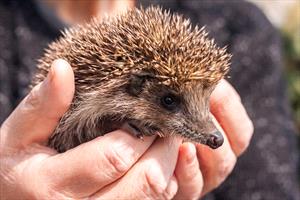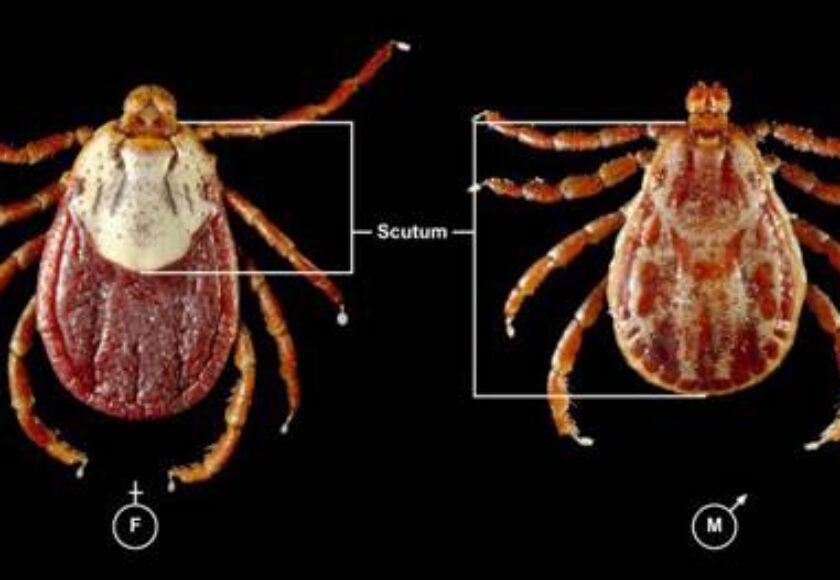Hedgehogs are adorable and affectionate little animals, but they aren’t ideal pets for everyone. Be aware that they are not legal in all states, and in some areas, you may own them only with a permit, so be sure to check the requirements of the area where you live before deciding to purchase one.
Read on to learn a little about their personalities, their health care needs, and the routine day to day care that they require in order to stay healthy.

Hedgehog Personality
Hedgehogs are small animals, but a large addition to the household. Not only do they have large personalities, but also they require a lot of care, more than your average dog or cat. Hedgehogs that are acquired when young may be very social if handled regularly and gently, but some never adjust to handling and are shy and skittish their entire lives. Many adults may be nervous when handled, ball up and hiss, or hide.
As a rule, hedgehogs rarely bite. They are nocturnal, so expect them to be a tad bit grumpy during daylight hours, but up and ready to rumble overnight. Plan to keep them in an area where they do not keep the entire family up at night!
Some hedgehogs do something known as “anting,” where they find something new in the environment, “taste” it, and then begin to hypersalivate, creating a foam. They promptly then paste this spit all over themselves. This is a normal behavior, and nothing of concern – just a hedgehog way of checking out their surroundings! When loose in the house, hedgehogs often hide in corners, under furniture, and spend time foraging for spiders and insects in the house. They may be somewhat destructive, digging in carpets, household plants, and rummaging around in areas where you’d prefer not to have a hedgehog rumbling about!
Housing
Hedgehogs are not particularly social creatures, and generally prefer to be housed alone rather than with other hedgehogs, so a separate enclosure for each hedgehog is recommended. They are not strong climbers, but may scale wire and then fall and hurt themselves, so smooth-sided containers with lots of ventilation are recommended. Many people are able to build suitable caging, but be sure that it is large (at least 2 feet by 3 feet per hedgehog), easy to clean, and has lots of healthy air flow through it. As a rule, hedgies prefer quiet, dark environments and are easily startled if housed in areas with bright light and loud noises, such as in a laundry room. Most hedgehogs aren’t big believers in litter pans, so expect to do a lot of cleaning. Bedding such as recycled paper products work well and are easy to spot clean as well as change out regularly.
One commonly overlooked fact is that hedgehogs do best in warm environments and should be kept between 75-85°F (24-30°C). In most households, supplemental heat in the form of a heat lamp or chew-proof heating pad must be provided.
Hedgehogs like to have toys and will readily use boxes, side-turned flower pots, tubes to explore, exercise wheels with solid floors, and warm shallow tubs for swimming. Many hedgehogs will entertain themselves for hours if provided insects in their cage to hunt, such as live crickets, dubia roaches, and mealworms are valuable dietary additions plus sources of exercise and stimulation.
Feeding
One of the most frequent health problems we see in hedgehogs is obesity; many animals simply get too much food and too little exercise. Often, they are also fed an incorrect diet. Many commercial foods on the market have little to no science to substantiate them as a good food. Hedgehogs are insectivores, not carnivores, so feeding something like dog or cat food really is not appropriate as a sole diet.
We would like them to have a diet that is high in protein and low in fat, and recommend offering the majority of the food in the evening only when the hedgehog is most active. Leaving food available all day encourages snacking and weight gain. An ideal diet mix for one day would include something along the lines of 2 heaping teaspoons of a bird of prey diet or a commercial insectivore diet, a teaspoon of low-fat high-quality cat food, a teaspoon of mixed vegetables, and 6-8 insects (include a variety of crickets, dubia roaches, phoenix worms, and mealworms).
Avoid high sugar items such as carrots, apples, bananas, raisins, and so on, and concentrate on dark green nutritious vegetables. There is a possibility, although not proven, that raisins or grapes may contribute to kidney injury. Likewise, insects should be fed as a variety and not just limited to crickets and mealworms, or whatever the local pet store carries all the time. Much of hedgehog food may need to be special ordered, as it often is not readily available.
Routine Home Care
Hedgehog toenails grow quite rapidly, and they should be trimmed at least once per month. Also, they are prone to dental disease, particularly if they are fed sweet or sugary fruits or treats; regular tooth brushing can help keep the teeth healthy and minimize the amount of professional cleaning required. The other critical things to watch for at home that can help minimize or prevent a lot of health problems is maintaining a healthy diet, preventing obesity, being sure that the bedding remains clean and dry, and maintaining a heated environment year round to help prevent chilling.
Health Problems
Unfortunately, hedgehogs do not tend to be particularly long lived; although they have been reported to live 6-10 years in captivity, in reality most do not survive much past 3 years. They are also prone to a large number of health problems, the most notable ones being cancer and neurologic problems (Wobbly Hedgehog Syndrome). Many of the other routine diseases we see, such as obesity, dental disease, trauma, and pneumonia can largely be prevented with good husbandry care at home.
Be sure to do your homework before bringing a hedgehog into your home. If the hedgehog is not quite right for you, keep looking around to find a small mammal that is.

